The importance of eye drops for cats cannot be overstated, especially when considering the various ocular conditions that may necessitate their use. From infections to chronic diseases, the well-being of our feline companions often hinges on proper eye care.
However, administering these drops can pose a challenge, particularly when dealing with a less-than-cooperative feline. How can cat owners navigate this task effectively while ensuring their pet's comfort and safety?
Let's explore the nuances of this essential aspect of feline healthcare, shedding light on best practices and techniques to master this delicate art.
Key Takeaways
- Cat eye drops treat infections, injuries, dryness, and allergies.
- Prompt veterinary consultation is crucial for eye conditions in cats.
- Avoid using human eye drops without vet approval.
- Prioritize safe administration and seek veterinary guidance for cat eye care.
Common Reasons for Cat Eye Drops
When considering the administration of eye drops to cats, understanding the common reasons behind their necessity is crucial for proper feline eye care. Eye drops play a vital role in treating various eye conditions in cats. They are commonly used to aid in treating eye infections caused by viruses or bacteria, assist in healing abrasions or scratches to the cornea, add moisture and lubrication for dry eyes, manage glaucoma, especially in certain cat breeds, and address eye allergies causing redness and itchiness.
Recognizing these common reasons for using eye drops can help cat owners provide the necessary care and attention to their feline companions' eye health, ensuring a comfortable and healthy life for their beloved pets.
Eye Conditions Requiring Veterinary Attention
Addressing eye conditions that necessitate veterinary attention is crucial for ensuring the well-being and visual health of cats. Symptoms such as redness, discharge, excessive blinking, or a third eyelid covering more of the eye could indicate underlying issues.
Eye infections associated with upper respiratory infections may lead to sneezing and nasal discharge, requiring prompt veterinary consultation for proper treatment.
Abrasions or scratches from trauma like dust particles or cat claws can result in pain, eye rubbing behavior, and discharge, necessitating veterinary attention.
Dry eye inflammation, characterized by insufficient tear production, may lead to redness, pain, and irritation, requiring veterinary diagnosis, treatment, and special care.
Regular eye check-ups are recommended to maintain your cat's eye health.
Symptoms of Eye Infections in Cats
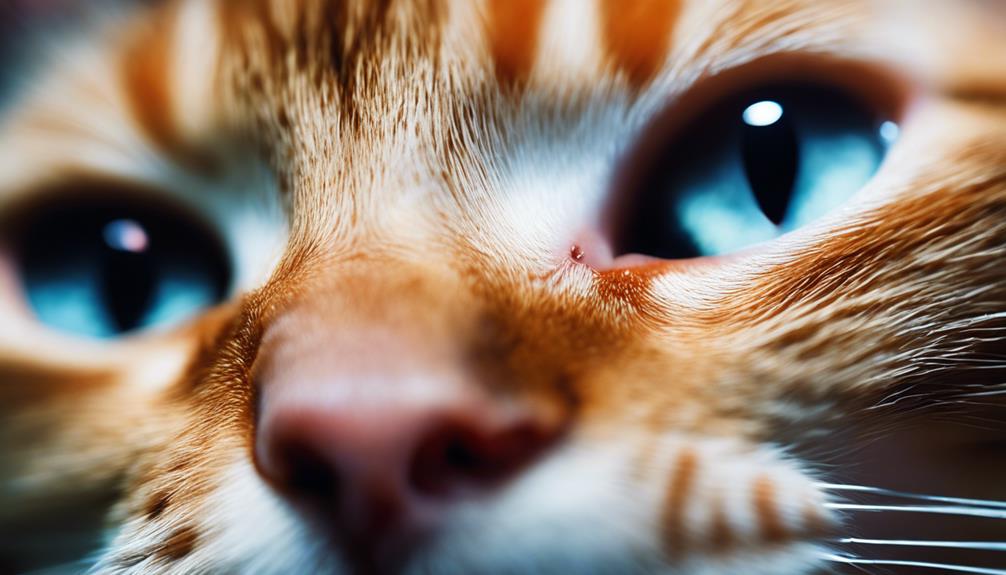
Detecting symptoms of eye infections in cats is crucial for timely intervention and proper treatment to safeguard their ocular health. Watch for signs such as redness, discharge, and excessive blinking, which may indicate an infection.
Keep an eye out for the third eyelid covering more of the eye, often associated with upper respiratory infections that can lead to sneezing and nasal discharge. Abrasions or scratches caused by trauma like dust particles or cat claws may result in pain, eye rubbing behavior, and discharge.
If you notice any of these symptoms, prompt veterinary consultation is advised for a thorough examination and appropriate treatment to ensure your cat's eye health is maintained.
Administering Eye Drops Safely
To ensure the safe and effective administration of eye drops to cats, it is essential to follow proper techniques recommended by veterinary professionals. When administering eye drops to your feline friend, consider the following tips:
- Approach your cat calmly and gently to reduce stress levels.
- Use treats or positive reinforcement to create a positive association with the process.
- Hold your cat securely but without causing discomfort.
- Administer the eye drops with precision and care, avoiding sudden movements that could startle your cat.
Can You Use Human Eye Drops?
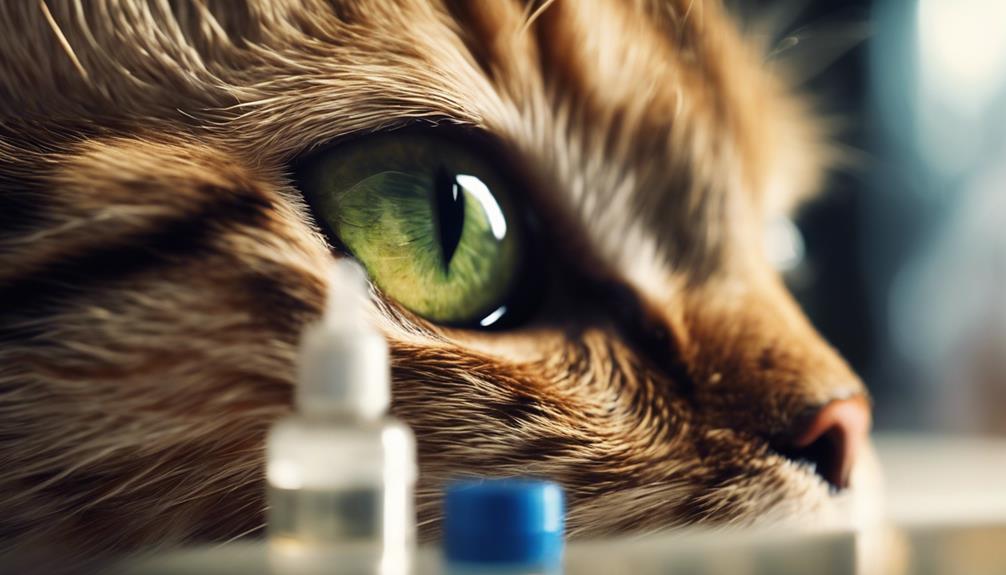
In considering the administration of eye drops to cats, it is crucial to ascertain whether human eye drops are suitable for feline use, a question often posed by pet owners seeking to address their cats' ocular health needs. While human eye drops may seem like a convenient solution, it is essential to consult a veterinarian before using them on cats.
Some ingredients in human eye drops could cause adverse effects on feline eyes due to differences in physiology. Cats' eyes are delicate and irreplaceable, underscoring the importance of prioritizing veterinary advice for their eye care.
Ensuring the safe and effective treatment of cats' eyes requires careful consideration and appropriate guidance from a professional to safeguard their ocular health.
Safety Measures for Cats' Eyes
Ensuring the well-being of feline eyes necessitates meticulous attention to safety measures and preventive practices.
- Avoid Potential Hazards: Keep chemicals and sharp objects away from your cat's eye level.
- Regular Eye Examinations: Schedule routine check-ups with your veterinarian to monitor your cat's eye health.
- Gentle Handling: Be gentle when cleaning around your cat's eyes to prevent accidental injuries.
- Prompt Veterinary Consultation: Seek immediate veterinary advice if you notice any unusual symptoms or changes in your cat's eyes.
Eye Drop Application Techniques
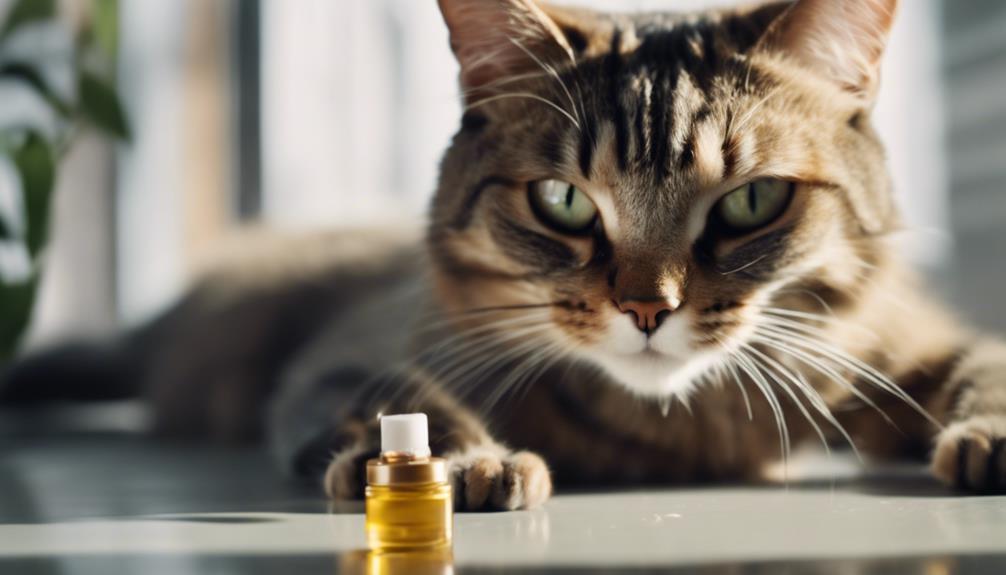
Implementing proper techniques for administering eye drops to cats is essential for ensuring effective treatment and maintaining their ocular health. When applying eye drops to your feline companion, it's crucial to approach the task with care and precision. Below is a helpful guide outlining key techniques for successful eye drop administration to cats:
| Technique | Description | Importance |
|---|---|---|
| Restraint | Securely hold your cat to prevent movement. | Minimizes the risk of injury. |
| Eye Preparation | Gently clean any discharge around the eye. | Ensures the eye is ready for treatment. |
| Proper Dosage Control | Administer the correct amount of eye drops. | Prevents over or under medication. |
Tips to Minimize Cat Discomfort
To ensure a more comfortable experience for cats during the administration of eye drops, employing gentle handling techniques and creating a calm environment can significantly minimize their discomfort.
- Approach your cat calmly and quietly
- Use soft and reassuring tones when speaking
- Offer treats or rewards for positive reinforcement
- Take breaks if your cat becomes stressed
Importance of Veterinary Consultation
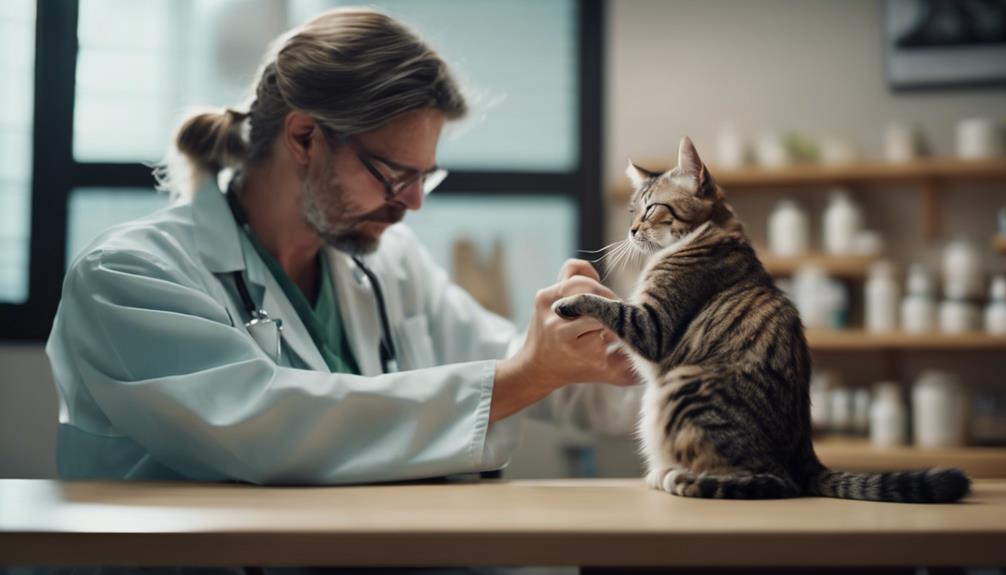
Seeking veterinary consultation is crucial for ensuring the proper diagnosis and treatment of eye conditions in cats. It is important to consult a professional to address any concerns about your cat's eye health adequately. Below is a table highlighting the significance of veterinary consultation in managing eye issues in cats:
| Reasons for Consultation | Importance | Benefits |
|---|---|---|
| Proper Diagnosis | Essential for accurate treatment | Ensures targeted and effective care |
| Treatment Guidance | Tailored medical advice | Improves chances of successful recovery |
| Preventing Complications | Early detection of issues | Minimizes risks and potential long-term effects |
| Follow-up Care | Ensures progress monitoring | Adjustments made for optimal healing |
Managing Eye Allergies in Cats
Proper veterinary consultation plays a crucial role in effectively managing eye allergies in cats, ensuring targeted care and optimal treatment outcomes. When dealing with eye allergies in your feline friend, consider the following to provide the best care possible:
- Identifying specific allergens triggering the reaction
- Implementing environmental changes to reduce allergen exposure
- Using prescribed antihistamines or eye drops as directed by the vet
- Monitoring your cat's response to treatment for adjustments as needed
Understanding Cat Eye Health
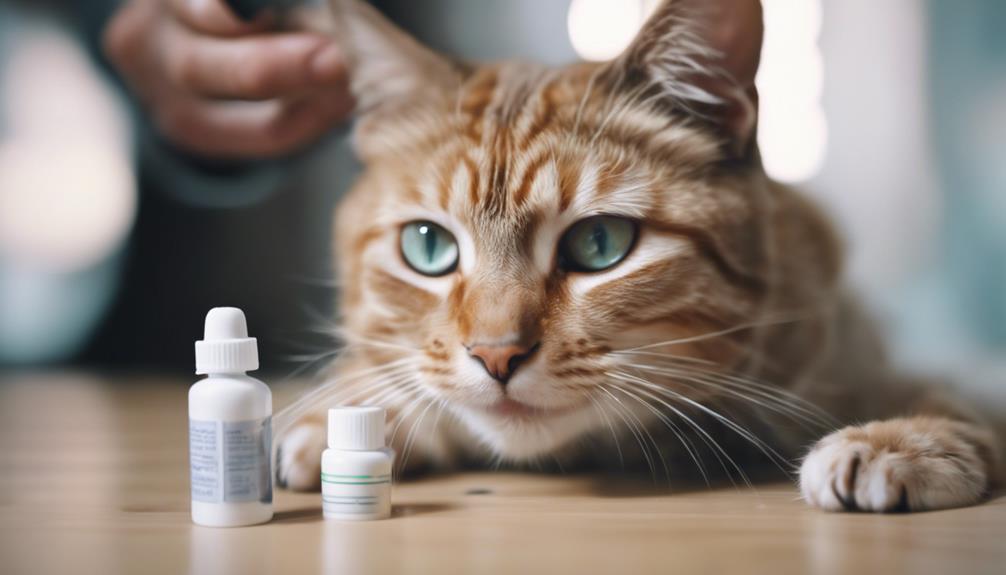
Exploring the intricate anatomy and functions of a cat's eyes reveals the essential role they play in your feline companion's overall health and well-being. Cats' eyes are not just windows to their souls but also crucial indicators of their health. Here is a table highlighting key aspects of cat eye health:
| Aspect | Importance | Impact |
|---|---|---|
| Clear Eyes | Vital for Vision | Bright and Alert |
| Dilated Pupils | Emotional State | Fear or Aggression |
| Cloudy Appearance | Health Concern | Possible Infection |
Understanding these aspects can help you monitor your cat's well-being and promptly address any issues that may arise.
Addressing Dry Eye in Cats
Understanding the significance of addressing dry eye in cats requires a keen awareness of the symptoms and potential implications on feline ocular health.
- Symptoms of Dry Eye in Cats:
- Excessive blinking or squinting
- Watery discharge from the eyes
- Redness or inflammation in the eye area
- Noticeable discomfort or pawing at the eyes
Dry eye, also known as keratoconjunctivitis sicca (KCS), can lead to serious complications if left untreated. Seeking veterinary attention is crucial to diagnose and manage this condition effectively. Providing appropriate treatment and care for cats with dry eye is essential to prevent further discomfort and potential damage to their eyesight.
Preventing Eye Injuries in Cats
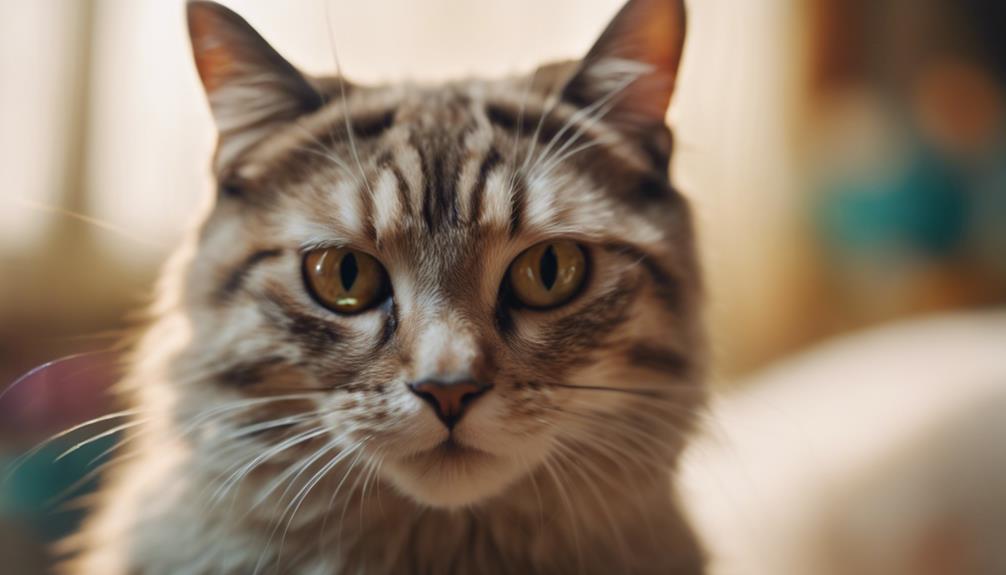
To safeguard your feline companion's ocular health, implementing preventive measures is paramount in reducing the risk of eye injuries in cats. Simple steps like keeping hazardous chemicals away from your cat's environment, ensuring their living space is free of sharp objects, and monitoring their playtime can significantly lower the chances of eye accidents.
Regular grooming to prevent fur from obstructing vision, as well as maintaining routine veterinary check-ups to catch any potential issues early on, are essential components of eye injury prevention.
Frequently Asked Questions
Can Cats Develop Resistance to Certain Types of Eye Drops Over Time?
Cats may develop resistance to certain types of eye drops over time. This can occur due to prolonged use of the same medication, leading to reduced effectiveness. Consult a veterinarian for guidance on adjusting treatment.
Are There Specific Breeds of Cats That Are More Prone to Eye Infections Requiring Eye Drops?
Certain cat breeds, such as Persians and Himalayans, are more prone to eye infections requiring eye drops due to their facial anatomy. Professional consultation is crucial to address specific breed vulnerabilities and ensure effective treatment.
How Can a Cat Owner Tell if Their Cat Is Experiencing Discomfort From Eye Drops?
Cat owners can notice signs of discomfort in cats receiving eye drops through behaviors such as pawing at the eyes, increased blinking, avoiding eye contact, or vocalizing. Continuous monitoring and consultation with a veterinarian are crucial.
Are There Alternative Methods of Administering Eye Drops to Cats for Those Who Struggle With the Traditional Approach?
Alternative methods for administering eye drops to cats include using a gentle approach by wrapping them in a towel to minimize movement, utilizing specialized tools like eye droppers, and seeking assistance from a professional veterinarian for tailored advice on successful administration techniques.
Can Over-The-Counter Eye Drops for Humans Be Harmful if Accidentally Administered to a Cat?
Over-the-counter eye drops for humans can be harmful if accidentally administered to a cat. Ingredients in human eye drops may cause adverse effects on delicate feline eyes. Always consult a veterinarian for proper cat-specific eye care.
Conclusion
In conclusion, proper eye care for cats is essential to safeguard their ocular health. Understanding the reasons for needing eye drops, recognizing symptoms of eye conditions, and administering drops safely are crucial aspects of feline eye care.
Seeking veterinary guidance and using appropriate eye drops designed for cats can help prevent further complications and ensure the well-being of our beloved feline companions.




